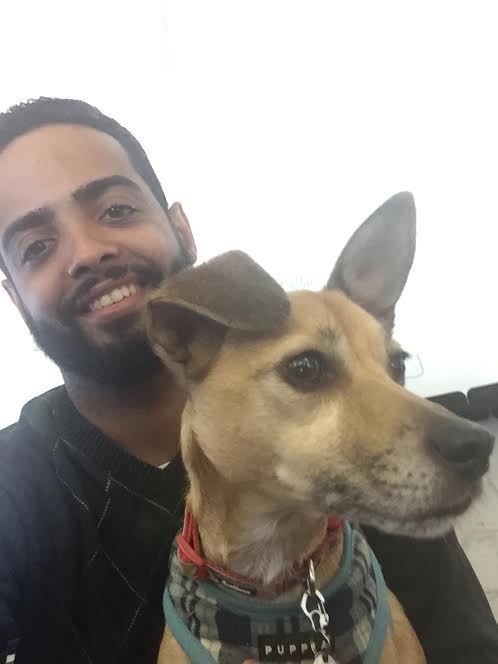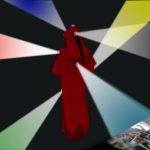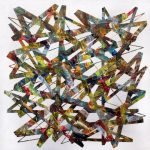FEATURED INTERVIEW FROM IAP NEWSLETTER #70: RICHARD BATISTA
“If you have to write program to make a dog bark, there are a million ways to write that code, just like there are a million ways to paint a dog barking.”
In celebration of Immigrant Heritage Month we focus on Richard Batista, NYFA Developer, an immigrant from the Dominican Republic, working with our in-house technology team supporting and creating NYFA’s website.
You were originally from Dominican Republic and came here as a young child. Can you tell us more about your journey to the United States?
Well my journey started in 1986 when I was just four years old. My parents left the Dominican Republic two years prior, leaving me and my older brother with family members. It was very difficult to see my mom visit us and then have to leave. It felt like she was abandoning us. That is difficult for a child to understand, that their parents are not abandoning them but are actually doing the opposite. They are trying to give them a better life. Once I got to America, my next hurdle was to get through the social and language barriers. Since I was a winter baby and came here in the summer, I had to start school within a few months of just coming to America. All I can say is that my first few years of being in America were very difficult.
Do you have any observations about the transition, any of the challenges you faced or conversely the opportunities that arose for you and your family?
For my family there were many hurdles. One hurdle that stuck out for me the most was getting a college education. Being an immigrant made it difficult to get an education because I was expected to work and provide for my family at a young age. That mentality discouraged me from going to school and having dreams like being an artist.
How do you view your immigrant heritage now that you have been established here for many years?
So that’s a good question because I think that the way you look at your heritage depends a lot on the age you were when you arrived. For example my brother came here a lot older than me and he wasn’t able to adapt as well I did. Since I came at such a young age, my first years were very hard, but I adapted to the culture and the language over time. But on the other hand, my brother was not that lucky. For him it became a lifelong struggle to adapt to the American lifestyle. So he tended to make friends only from his culture while I made friends with anyone that would talk to me.
You are now part of NYFA’s in-house technology team that supports our constituents through our website and other online services. Can you tell us more about your work history, how you ended up at NYFA? Was being part of a creative organization of interest to you?
I’ve been a software developer for about 5 years and prior to that I did IT work for different companies. So can you say I have been working professionally in the computer industry for about 10 years. As a child I always wanted to go into robotics, but once I got older getting a job in robotics seemed a little harder. Being a part of the NYFA family is a unique experience for me. This is the first creative organization that I’ve worked for and I now look at programming more like art.
Do you approach your work as a developer as an artist might create their artwork? What for you is the connection between arts and technology, if any?
I think anybody who develops software is an artist. A lot of people don’t understand the art involved in creating code. For example, if you have to write program to make a dog bark, there are a million ways to write that code, just like there are a million ways to paint a dog barking. That’s the way I look at writing code.
Do you have any advice to share with our audience about being an immigrant in the US?
I would quote Pernille Spiers-Lopez, the former CEO of IKEA who was born in Denmark, and moved to the US at the age of 23: “America is the country of opportunity. Bring a new perspective and be yourself, but take your time to understand the new culture.“
Click here to hear other immigrant stories as part of Immigrant Heritage Month supported by Welcome.US. Join in with your story! #ImmigrantHeritageMonth
This interview was featured in Issue No. 70 of the Con Edison Immigrant Artist Newsletter. Are you currently receiving this free newsletter? Sign up to receive the monthly email featuring artist interviews, special reports, and upcoming arts deadlines and professional development resources.
Image: Richard Batista with NYFA office dog, Trixie.





